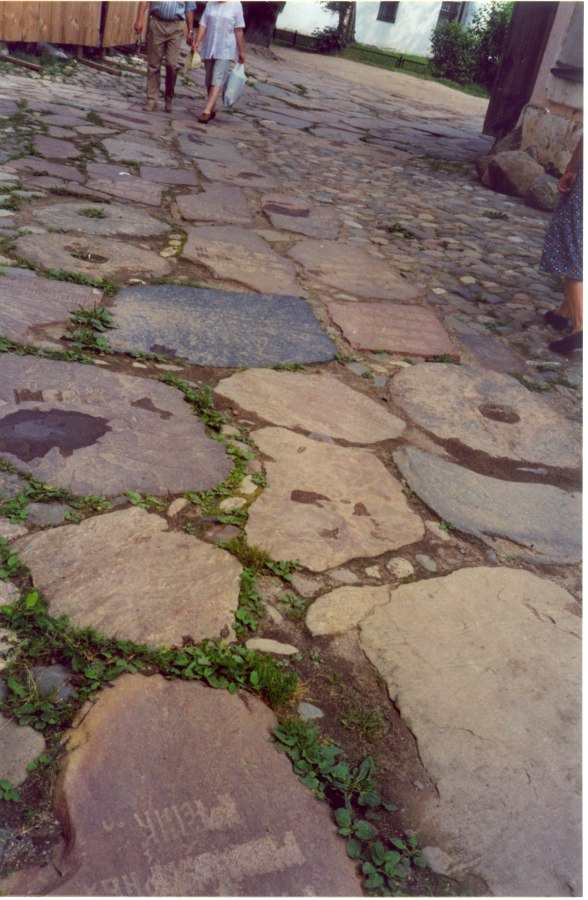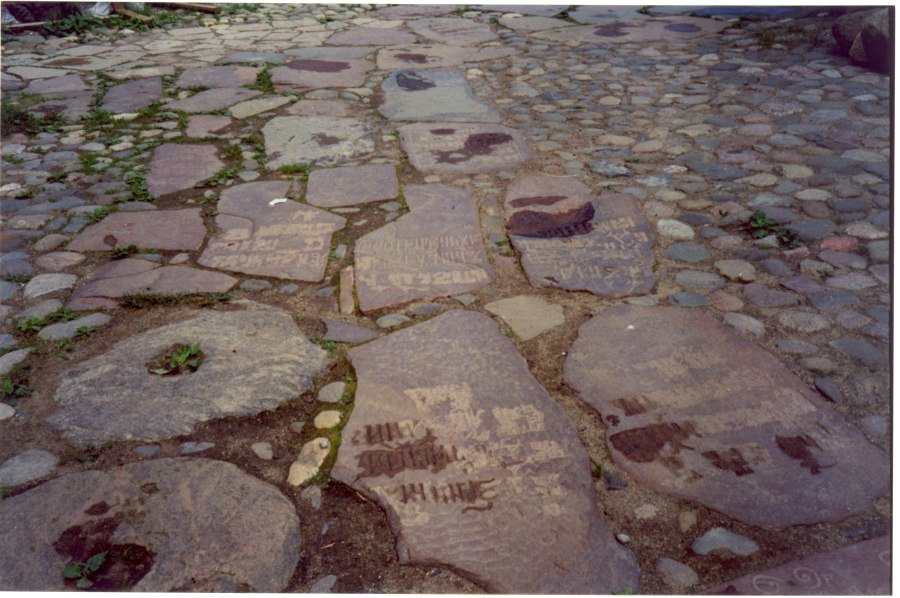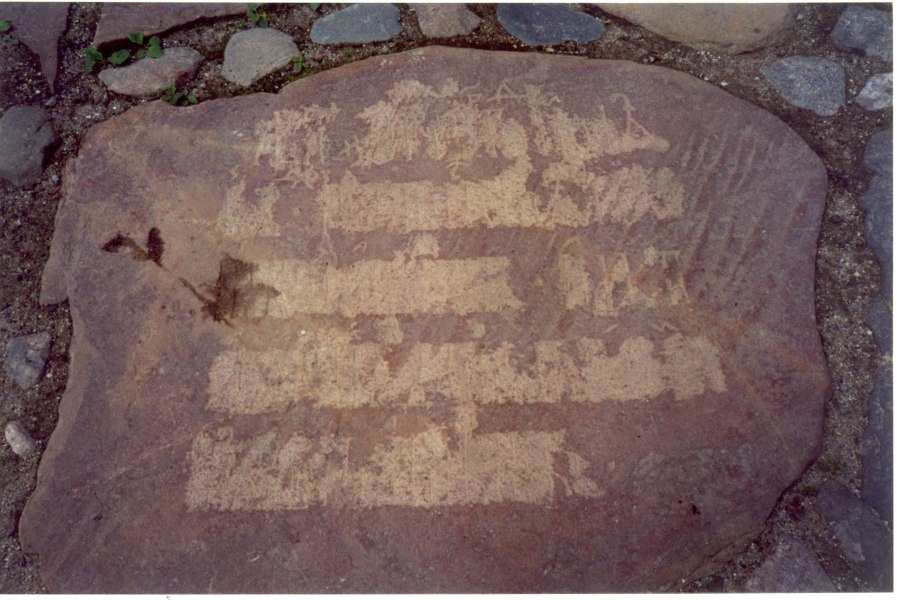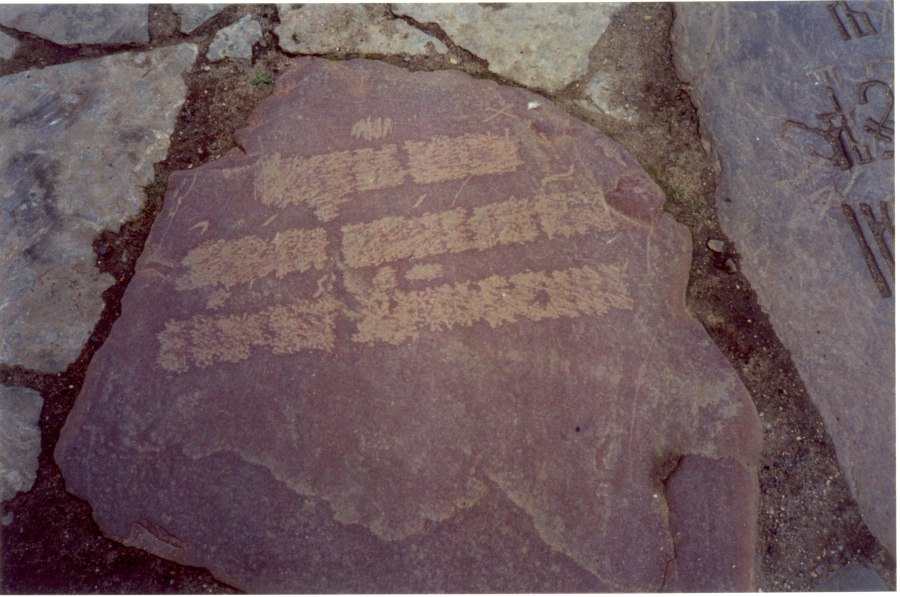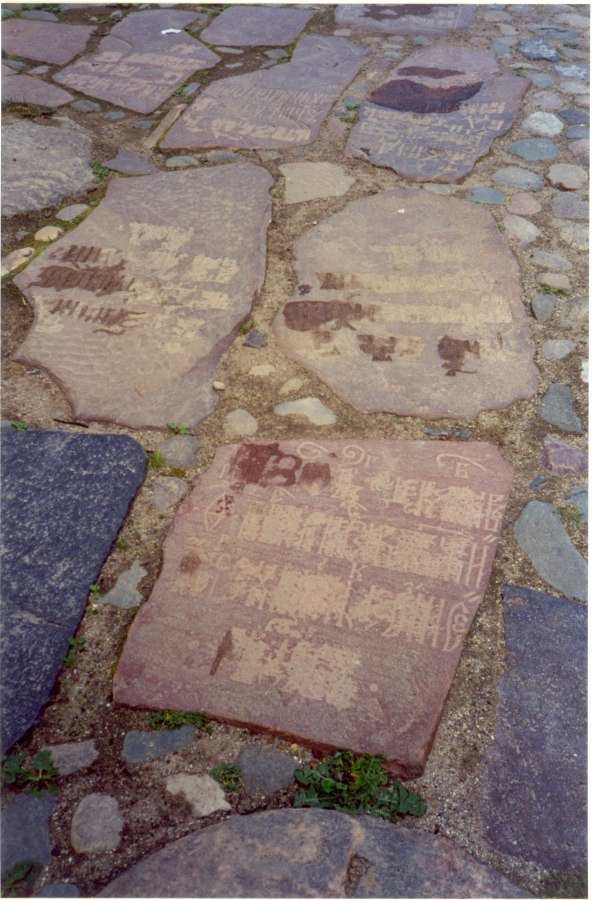Chapter 12.
Western Europe of the XIV-XVI century as part of the Great = "Mongolian" Empire.
19. "MONGOLIAN" = THE GREAT EMPIRE WAS SPLIT IN THE XVII CENTURY
19.1. WHY "MONGOLIAN" EMPIRE, THE FIRST AND SINGLE REALLY WORLD EMPIRE, THROUGH THE THREE HUNDRED YEARS WAS SPLITTED
The causes of the collapse of the Great Empire - so VAST and centralized form of state - are apparently understandable. There could have been several, of course. The first one was the enormous size of the Empire that made information links of the khanate metropolis with distant provinces difficult. Following the stormy emergence of the Empire in the XIV-XV centuries resulting from the "Mongolian" invasion and rapid conquest of the "promised land" in Eurasia, Africa and America, it has entered a phase of more peaceful development of Khan-Horde state.
Note that such an enormous Empire englobing most of the whole world, did not exist neither before, nor after that time. In general, numerous management tasks were addressed successfully. In the final count, the Great = "Mongolian" Empire existed for approximately about three hundred years. This is surprisingly a long time if we take into account the undeveloped in means of communication of that epoch. It took most likely, a few weeks or even months to deliver, for example, the Khan's order from the Great Novgorod to American Mexico. The fact of such a long life of the Empire clearly points to its healthy and viable principles, talentedly discovered and put in its basis by its rulers. However, the relatively slow transfer of information on the ways of the Empire forced the Khans to allow a certain autonomy for provinces. Presumably, a significant part of the functions of the imperial apparatus was willy-nilly entrusted to the "Mongolian" governors.
A certain autonomy of the Horde troops lodged in the provinces was also allowed. Probably, over time the limited autonomy "on the turf" began to change into a desire get out from under the tight control of Rus-Horde completely. Internal tensions grew. Disruptions with the payment of tribute to the imperial treasury began. Finally, the rebellion of the Reformation broke out in Western Europe. The coup d'état, organized in the capital of the Empire, led to its split. See the book "Biblical Russia" for details.
19.2. DIPLOMATIC SUCCESS OF WESTERN EUROPE IN ITS STRUGGLE WITH EMPIRE IN THE XVI-XVII CENTURIES.
Since the second half of the 16th century, Western Europe has been trying to leave the "Mongolian" Empire. Probably, being unable to achieve this with this military means, Western European politicians have focused on diplomatic operations. Apparently, it was conducted in two directions.
a) To organize or use a strife, civil war in Russ-Horde, in order to bring to power a pro-Western dynasty.
b) Split the alliance of the Russ-Horde and Osmany = Atamany, inciting them against each other. Let them fight and leave the West alone.
This program was successfully implemented. Judge for yourself.
a) In the second half of the XVI century in Russia, the Strife and Civil war begins. "In the capital of the Horde takes place there is a coup d'état, thereafter the Horde LOSES WAR, see the book "Biblical Russia". As a result, the pro-Western Romanovs come to power.
Military pressure on Western Europe from Russia is removed. In the West, a rebellion of Reformation breaks out. Peter I "cuts a window to Europe" and largely subordinates life in Russia to Western models.
The idea of the superiority of the West in culture and science, in military affairs, etc. is gradually implanted in the minds of the inhabitants of Russia. Russia is occupied to a large extent. Foreign invaders are given the old imperial lands. Serfdom is being introduced.
b) The Romanovs begin to pursue a policy that repels Russ from Turkey. The Russian-Turkish wars begin. Now Russ and Turkey have no time for Western Europe: "clear up things" among themselves. For a while, Western Europe gets a breather.
c) The Romanovs rewrote the history of Russia, essentially distorting it. In particular, the Horde = the Russian army was declared an evil alien force, that conquered not so much Western Europe and almost all of the world, - this is now barely mentioned, but supposedly Russia itself.
Furthermore, as a result of the policy of the Romanovs, "Mongolian" China splits from Russia. The Great Empire is divided into several new, reformist states - the countries of Western Europe, Russia, China, Turkey, Iran, India, Egypt and some other states in Europe, Africa, Asia and America.
19.3. WHO, WHEN AND WHY DISTORTED THE HISTORY OF ANTIQUITY, THAT IS THE HISTORY OF THE XI-XVI CENTURIES.
19.3.1. INVOLONTARY MISTAKES AND INTENTIONAL FALSIFICATIONS.
Here we enter the unsteady soil of the ASSUMPTIONS. But this is necessary if we want to understand the causes of the distortion of history. Moreover, the material that we have accumulated allows making specific hypotheses.
As we have repeatedly pointed out, the reason for the erroneous construction of chronology, and therefore the edifice of the world history, were the chronological errors. We have already pointed to the most likely reasons.
First of all, there were INVOLONTARY MISTAKES. They merely had to appear because of the imperfect way of recording the dates used in the XII-XVI centuries, see "Foundations of History," chapter 6: 13. Delving deep into the problem, we concluded that, apart from the unconscious mistakes were, probably, the conscious ones. That is the INTENTIONAL DISTORTION OF ANCIENT CHRONOLOGY AND HISTORY. However, it is not necessary to think that today's historians remember and consciously support these mistakes. By no means. Once made, distortions were quickly assimilated, and the subsequent generations forget their causes. Today, the supporters of Scaliger version support it primarily only thanks to the inertia of thinking.
When building an edifice of ancient history were committed, roughly speaking, two MAJOR errors.
FIRST ERROR. Wrongly dated the Nativity of Christ. Instead of using the real date (1152) from the XII century AD, the date of Nativity was moved ONE THOUSAND AND HUNDRED to the past. Thus, have introduced a "new era," wrongly declared the era of Christmas Christ, see "Foundations of History," chapter 6: 13. The mistake was made in the XVI-XVII centuries. As we have already said, the task of constructing the correct chronology was complex and met with specific astronomical and calendar difficulties. Let us remind the reader, that the emperor Andronicus-Christ (1152-1185) (also called Prince Andrey Bogolyubsky, idem Apostle Andrew the First) was crucified in 1185 in Czar-Grad. See our book "The Czar of the Slavs ".
This fundamental error (wrongly dated the Nativity of Christ) has dragged a tremendous amount of CONSEQUENCES, and other errors. The unrestrained "BREEDING OF HISTORY" began. Different chronicles, describing in general, THE SAME EVENTS, have started to creep along the time axis. In global history appeared sure chaos. And the more chronologists of the XVII-XVIII centuries worked, the more it accumulated.
Moreover, at the same time, this chaos hardened like concrete. In particular, multiplied and "Mongolian" = the great conquest of the XIV century. And its reflections, too, "moved down."
SECOND ERROR. It was, apparently, INTENTIONAL. It was a purposeful and quite conscious distortion of the Russian-Türkic "Mongolian" conquest of Europe, Asia, Africa and America in the XIV-XV centuries and Ottoman = Ataman conquest of the "promised land" in the XV-XVI
centuries. The main goal of the falsifiers was to forget the history of the Great = "Mongolian" Empire of the XIV-XVI centuries. They succeeded. Although with effort, see the book "Biblical Russia." Distortion was made in reformed Western Europe of the XVII-XVIII centuries, after the seizure of power in Russia by Romanovs in the XVII century, and was actively introduced in Russia. The historians of that time executed the decree of the new rebellious rulers, who wanted to get rid of the history of the Great Empire. In other words, to justify the rebellion of the Reformation.
It should be understood that after the seizure of power by the reformers, to distort history in the XVII century was already quite simple. For this, it is not necessary to write anew multi-volume annals with fantastic events. Falsifiers XVII century came up with an elementary and in a sense an ingenious device. They realized that the DISTORTION OF THE CHRONOLOGY would suffice. It is sufficient to make one or more date shifts back to the past. It is enough, for example, to declare the letter I - the first the character of the name Jesus - the designation of a millennium, therefore the mass of authentic documents AUTOMATICALLY fell into deep phantom antiquity. After that, the history of the 12th-16th centuries was much impoverished, since many of the documents were declared to have originated allegedly from the epochs of the earlier X century AD. After that, there was generally little left to do. It was enough to review the surviving chronicles of the 11th-16th centuries and edit them in the right direction. Although this work, of course, took time but was not so incredibly complicated.
At first, the new rulers formulated their task for the historians. Then a few dozens of years of unhurried routine work of just a few groups editors admitted to secret state archives, the ones captured during the Reformation. Worked unnoticed, in the quiet of the offices. The results, probably, were reported upstairs. From there they received new ones, mostly oral, instructions. Typographies in the XVII-XVIII centuries were rare. They printed what they needed in a sufficient number of copies.
Moreover, what was not required, burned in the fires of the Reformation. The population was brought up in schools on new, "correct" programs. Children listened trustfully and absorbed. And they began to believe sincerely. If someone of the parents expressed doubts about the correctness of the "new history," they were politely corrected, the stubborn ones were put on the stake. Needless to say, not for history, but for aiding the devil and the witches.
19.3.2. TODAY SCALIGER CHRONOLOGICAL DUPLICATES ARE USEFUL FOR THE RECONSTRUCTION OF THE CORRECT HISTORY.
Duplicates are useful because they block the complete destruction of information and ultimately allow to restore the TRUTH. One copy of the document can be destroyed or distorted, of course, it is possible. But when there are a lot of copies, and even more so, when it's already forgotten that they TELL ACTUALLY ABOUT THE SAME EVENT, the destruction becomes significantly more difficult.
That is precisely what we see. The history of the "Mongolian" = the great conquest in the XIVth century was completely distorted. The colonizing conquerors declared disappeared savages from the borders of distant China. But fortunately, DUPLICATES OF THE CONQUEST remained almost untouched. For example, - The great Slavic conquest of Europe allegedly VI-VII centuries AD, about which tells us today, for example, the book of Orbini. Editors of History simply did not recognize the Slavic conquest of supposedly VI-VII centuries as a duplicate of the Russian-Turkic "Mongolian" XIV-XV centuries.
They were led astray by the first chronological error. It happily pulled many AUTHENTIC documents that speak of the Russian-Turkic conquest of the fourteenth and fifteenth centuries in the early the Middle Ages and even in ancient times. For example, in "Ancient" African Egypt, which we will discuss below. THUS SOME DOCUMENTS WERE SAVED FROM DESTRUCTION IN THE XVII-XVIII Centuries. Therefore, today the preserved duplicates in ancient history are useful. They help to restore the real picture.
19.4. DISPUTE ON WHICH RELIGION IS MORE ANCIENT. WHY IT IS BETTER TO USE A LONGER ANCIENT HISTORY.
Apparently, in the fifteenth century, began a division of the initial Christianity of the 12th-14th centuries into several competing branches-religions. Finally, the strict division took place only in the 16th century and, as a result, ended with a severe religious schism in the XVII-XVIII centuries. In the XVII century began the inevitable process of "sharing the religious heritage" of the Great = "Mongolian" Empire between Orthodoxy, Islam, Catholicism, Buddhism, and Judaism.
Of course, along with the religious, was shared the historical heritage. The appearance in the world of the XVII century and competition in the XVII-XVIII centuries of at least five religions inevitably provoked a polemic - "which faith is true." Probably one of the main arguments in the dispute was a reference to the age of faith. The reasoning was this: the more ancient religion and its religious institutions are, the more authoritative it is, and therefore "truer." Probably, the proof of the correctness of that or another idea based on its age was always, and today also, perceived as something natural. References to the age of the concept are respected for the same the reason as for recognizing the age of the human race.
Consequently, the religious dispute about the priority that arose in the XVIth century of one or another religious branch of Christianity was automatically inducted into a dispute XVII-XVIII centuries - "which religion is older?". The more ancient was the one that rested on a longer, that is, more ancient history. Thus, the problem of priority and religious leadership was reduced to the need for "evidence" with the following statement: "our history is more ancient than yours." We simplify here is the scheme of reasoning.
It is clear that the authority of this or another religion is without a doubt primarily ensured by the authorities and the power of the state in which it was professed. The stronger the country was, in military terms, - the more authoritative was its religion. And, consequently, this religion needed less other arguments, such as the artificial lengthening of their history.
Conversely, a religion professed in a state that is in the unfavorable military, and political conditions were forced to compensate for the lack of military force with more activities in the creating for themselves a "very ancient," that is a long history. In short, instead of the authority of military power – religion reverted to the authority of a long history.
By the way, the authority of history helps, in particular, in the BORDER DISPUTES, WHEN RAISING ITS RIGHTS TO THIS OR ANOTHER TERRITORY. Even current political disputes over territories are often reduced to a discussion of the type - "we lived here before you." With mandatory references to ancient and medieval history.
However, it should be borne in mind that a strong country is merely trying to seize the disputed territory with the help of military force, having little interest in ancient history. But the weaker country has to turn to chronology and to seek historical arguments in the extreme antiquity,
proving their rightness. So the chronology turns into a real political weapon. One must think that they were not neglected in ancient times either.
Nowadays, in the era of more or less frozen spheres of influence, the "historical arguments" do not play the main role, but in the XVII-XVIII centuries, when the newly formed reformatory states
only started to "divide the world," that is the fragments and blocks of the Great Empire - "historical evidence," we can assume, were much more popular.
19.5. MILITARY AND STATE SUPPORT FOR THE FOUR RELIGIONS OF THE XVII CENTURY AND SCALIGERIAN RANKING OF RELIGIONS BY THEIR AGE
Thus, if we rank the four major new branches-religions of the XVII-XVIIIth centuries by the decreasing military might of the states, which supported them, we get something like this :
1) The strongest country of the XVII-XVIII centuries was still Romanov's Russia. The largest fragment of the Great Empire, "Russian bear," was still powerful. Perhaps, Peter I, apparently, cherished the idea of "restoring the Empire," see "New Chronology of Russia," Ch.14: 1. Moreover, he was not alone, since the XVII century a more or less modern form of Orthodoxy arose in Russia. Probably, it was still the closest to the initial Christianity of the 12th-16th centuries. Hence its name ORTHODOXAL CAFOLIC.
2) Following Russia, a comparable in military power State, was the former ally of Ancient Russ - Turkish Ottoman = Ataman Empire of the XVII century. It was at this time that the MUSLIM ISLAM took shape there.
3) They both were much superior in military power in this time, compared with the fractured rebel countries of Western Europe, including the "new Habsburgs, who have secretly appropriated an old history, fame and deeds of former Habsburgs = Novgorodians of the XIV-XVI centuries. In the XVII century in some Western Latin countries formed the Latin Catholicism and PROSTANSTANISM as the modified forms of the former Christianity of the XII-XVIth centuries. Italian Rome appropriated (on paper) the religious history "Mongolian" Empire of the XIV-XVI centuries.
4) The least secured with the centralized military-state support in the XVII century was a religious current Judaism. Therefore Judaism declared the Old Testament to be exclusively "its book."
So, in the XVIIth century, each of the listed religions began work on writing its history.
1) It should be expected that the chronology of Russia will be lengthened the least, in the chronological sense.
2) Islam-Islam was already forced to stretch its history into the past.
3) Even more, this concerned the history of Western European Catholic Church.
4) And, finally, the greatest elongation would undergo the history of Judaism.
We see that our idea is confirmed. The chronological picture, which arose in the XVII-XVIII centuries, thoroughly follows the hypothetical scheme, described above. Judge by yourself.
1) HISTORY OF RUSSIAN Orthodoxy and Ancient Russia in today's its presentation begins only with the IX-X centuries AD. Consensual Baptism of Russia takes place approximately at this time. That is, Russian = "Mongolian" history was less elongated into the past.
2) THE HISTORY OF ISLAM in its present description already begins with VII century AD. Consequently, the Islamic chronology was lengthened less compared with reality at least for a THREE-FOUR HUNDRED YEARS.
3) THE HISTORY OF CATHOLICISM, and consequently of many countries of Western Europe, elongated even more down to the first century AD, where the life of Jesus Christ was placed artificially. Thus, the Latin Catholic Church stretched its history for about thousand years.
4) The history of Judaism was extended most of all. Biblical events were pushed to the deep ANCIENT AGE. Biblical chronology was declared the oldest on earth. The chronological biblical shift here is at least 1800 years.
By the way, we find that the familiar THREE BASIC CHRONOLOGICAL SHIFTS pop up again. See the book "Foundations of History": approximately 330 or 360 years; approximately 1000 years or 1053 years; approximately 1780 or 1800 years. Our idea is that the shifts were invented and used mainly by Western ecclesiastical Chronologists. At that time, in the era of the XVII-XVIII centuries after the collapse "Mongolian" Empire, all the newly formed states began to write their history to give the most authority to them and their religion.
Moreover, it turned out that believing in its military strength, Romanov's Russia did not take care of "sufficient antiquity" of its written history and, as a result, soon became one of the "youngest." They probably remembered it, but it was too late to lengthen Russian history also or restore justice artificially, that is, to say that the other "long ancient histories "are not so ancient - it was already practically impossible. Since after the Romanovs came to power, the Russian historiography fell under the influence of pro-western ideology. The history of Russia was written by the Germans, see the book "The New Chronology of Russia."
Moreover, the west European historical science, of course, is not interested in revising the relatively new imaginary long ancient histories. Besides, the Romanovs additionally distorted Russian history, denigrating the Horde to justify their usurpation of power.
As a result, on the world map in the XVII-XVIII centuries we see "young civilizations," for example Russia, and allegedly" very ancient, respectable ones," for example, Italian Rome and Greece. On the top distortions in chronology, geographic changes, and re-localization were made too. Italian Rome, which emerged only in the XIV century and became the center of the new
Catholicism in the XVIIth century was immediately declared the "ancient capital." Rome could not come to terms with the fact that it was quite young. Hence, a huge piece of "Mongolian" history" was transplanted" (on paper) to the Italian soil. As a result, Italian Rome turned into allegedly the most ancient state. The authority of the new Catholic Church significantly strengthened.
19.6. FERRARA-FLORENTINE CONCIL AND FAILED ATTEMPT IN THE XV OR IN XVI CENTURY TO PREVENT THE CHURCH SPLIT
It is natural to assume that in the XVIth century the competitors: religion-branches - initially tried to smooth out the growing contradictions between them. Indeed, we saw ostensibly in the 15th century, and in reality, probably a hundred years later, in the sixteenth century - the famous Ferrara-Florentine Concil allegedly in 1438-1439. On it, as it is believed today, "UNIA (that is, the Union - Auth.) of Western Catholic, and Eastern Orthodox churches was proclaimed. The conclusion of the union was on the one hand, conditioned by the desire of the papacy to subjugate the Orthodox Church, and on the other - the threat of Turkish conquest of Byzantium "[344], page 7. However, those are problems of the XVI-XVII centuries, and not of the XV century.
The representative Russian delegation participated in the Concil. By one source, there were 100, and by another 200 people [344], p.22.
By the way, the Concil took place in Ferrara, allegedly in 1438, and finished its work in Florence supposedly in 1439 [344], p.8. Moreover, not in Rome! This agrees again with our reconstruction of the history of the Italian Rome. Which was only relatively recently proclaimed "very ancient."
"The head of the Russian delegation, Metropolitan Isidore, a Greek by nationality, was a supporter of the UNIA. In Florence, Isidore signed the act of the church union ... However, Russia was hostile to the union: when the embassy from the cathedral returned to Moscow, Isidor WAS arrested and imprisoned, he managed to escape to Lithuania, and then to Constantinople. In 1448, at the Concil of Russian bishops, the Bishop of Ryazan Iona was elected Metropolitan and the Russian Church became Autocephalic." [344], p.8.
UNION WAS REJECTED. Thus, the agreement between the West European "Mongolian" governors and the Russian-Horde "Mongolian" metropolis could not be reached. Apparently, after that, the West began writing authoritative long "ancient" history.
20. POGROM OF THE RUSSIAN HORDE HISTORY ON THE EXAMPLE OF KIRILLO-BELOZERSKY MONASTERY.
Kirillo-Belozersky Monastery is one of the oldest and famous monasteries of medieval Russia. We visited it on July 9, 2002. To our question the guide what has been preserved here from old graves before the 17th century, he pointed us to the broad road leading to the Assumption Cathedral monastery and entirely paved with dozens of ancient tombstones, Fig.12.46, Fig.12.47.
At the same time, he told us the following incredible story. It turns out that the monastery had a vast ancient cemetery in XV-XVI centuries, where monks and other clergy were buried. In the XVII century cemetery was desecrated, and in its place, a church was erected. But before that, the slabs with inscriptions were removed to another place and paved the road to the Assumption Cathedral. And at the same time, the names on the plates were chiseled off.
These disfigured slabs lie here until today. Thousands visitors to the monastery walk on them. Another guide, who we also inquired about this story, confirmed everything and said, however, that the destruction of the cemetery occurred later, in the XIX century. One way or another, the events took place under the Romanovs. Both guides especially stressed that in this case "Soviet power has nothing to do with it," that the monuments were destructed in the Romanov era.
Feeling something is wrong in this whole story, both guides immediately, without even waiting for our puzzling questions, began to explain to us, and in detail why and what for it was done so.
Historians of the XIX-XX centuries assure (and, of course, it is their words that repeat the guides) that in XV-XVI centuries the monks themselves "humbly and convincingly asked" to bury them on a crowded road, to be used by the worshipers. Presumably, that the feet of men can tread the mortal remains of monks, thereby emphasizing the fleetingness of existence and the futility of the earthly hopes. Such, they say, was an old Russian custom. We cut here long, inspired and even slightly poetic reasoning of the guides on this topic. In principle, it would be possible, albeit with a stretch,
agree with the proposed "explanation" and even recollect some Western European cathedrals, where sometimes really inside the temple, (but not on a dusty road) there are graves, and the tombstones with inscriptions are visitors. However, although it would be easy to ponder, as it immediately becomes clear that in the case of Kirillo-Belozersky monastery, we came across something completely different.
If the monks really asked to bury them on the road, under the feet of passing people, this would be done immediately after their death. That is, a coffin or a sarcophagus would be laid in a pit dug in the road and covered with a tombstone slab. However, nothing was done! After all, the ancient cemetery of the Kirillo-Belozersky monastery was located (as, by the way, and it is necessary) not at all on the road, but in a quiet place, not far from the Cathedral. It turns out, according to historians, that their fellow contemporaries crudely violated the deathwish.
Initially, the monks were not buried on the road, - for what they are supposed to have begged - but in an ordinary cemetery. As it was always done in Russia. Somehow we have not heard about the "ancient Russian tradition" to bury their relatives on the road, under the feet of passers-by. Apart from Romanov historians and their current followers, nobody seems to know about it.
If you follow the version of historians further, it turns out even more absurd. Allegedly only after a hundred or even two hundred or three hundred years, the monk's monastery suddenly "finally remembered" about the humble request for the dead people of the XV-XVI centuries "to bury them on the road." Let it be so. But then, presumably, having apologized for such a long delay, they would have come to the cemetery, neatly dug up coffins and sarcophagi, moved them to the road and there they would be buried again, again covered with plates. Having executed, by the same token, "the last will of the dead." Let it be belated by three hundred years, but all the same, the wish would have been executed. But they did something completely different! The old cemetery was simply crudely crushed, and the remains were thrown away (will anyone dare to say now that the monks," asked about it themselves"). The guides do not hide this pogrom, they reported it in direct text and unambiguously. Moreover, today there was NOT ONE of the old burials - coffins with remains of the monks of the XV-XVI centuries - left here. Nevertheless, the plates were removed from tombs and used to pave the road, and many of the inscriptions were then chiseled off. Moreover, they put with the slabs together with the mill millstones! See Figure 12.46, Fig. 12.47.
By the way, whose "wish" was executed in this case? What have the millstones to do with the hypothetical desire of monks to lie after death under the feet of passers-by? And, we will repeat, absolutely strange (in the framework of the proposed Romanov version) was obvious deliberate knocking down of inscriptions from plates. A few typical examples are shown in Fig. 12.48, Fig. 12.49, Fig.12.50, Fig.12.51. Unable to resist, we asked the guide: well, let's say Romanov's historians, and you with them are right. But why had the inscriptions to be knocked down? It seems that, on the contrary, all passing worshippers would have seen that they have trampled upon a slab of such or such a monk. For example, Peter, Simeon, etc. And in the memory of the descendants, the humility of Peter, Paul and others would serve as a lesson and edification. Presumably, this question was asked by guides, not for the first time. Their response was instant and clear, but already noticeably irritated. Like, the inscriptions were knocked down because that's the idea "unique Russian humility" would be embodied much better than with whole the inscriptions. Passing people, it would seem, did not even need to know names of those whom they trample here. Such was, immediately started demagogic assure us the guide, "the ancient Russian custom."
In our opinion, all this is not true. Those were not the "memories" of the alleged unfulfilled request of monks XV-XVI centuries. What happened was: in the Kirillo-Belozersky monastery, as, indeed, in other old monasteries of Russ-Horde, there was a cemetery with neatly inscribed plates. In the XVII century, the power was usurped by the Romanovs. They began to smash the Russian-Horde history of the "Mongolian" Empire. See, for example, the book "New Chronology, Chapters 14: 5-7. They, in particular, destroyed ancient cemeteries, the remains were thrown away, the sarcophagi smashed. Reveling impunity, gravestones used to pave the road to emphasize his contempt of the Horde. Let them say that people are now trampling on the remains of monuments of their former idols and respected people. And you need to bring down names at all! The new generation clearly and unequivocally pointed out that the old history should be firmly forgotten. Moreover, forever. Look, there was nothing worthy in it. By knocking down names from tombstones, the Romanov's mockery reached its apotheosis. They sent into oblivion not only the remains but even the names of people.
Moreover, today's historians are obediently following them guides carefully tells us about the weird "Russian humility." And set as an example the enlightened Western Europe, which Russia needs to study, study and to study again (with this refrain our guide finished the tour).
